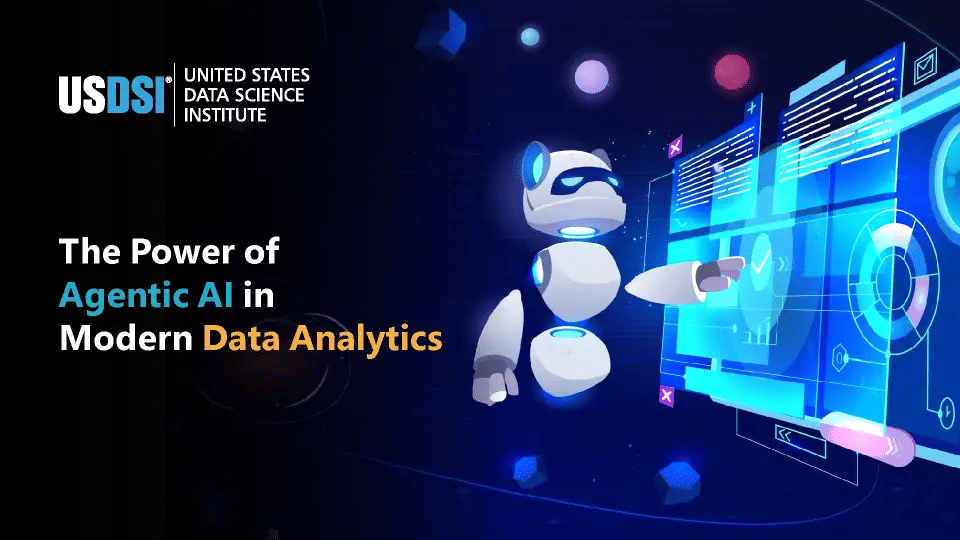
Data never sleeps, and neither do business decisions. The 2025 McKinsey and Company Global Survey on AI reveals that 88% of organizations report "regular use of AI in at least one business function in their organizations," with only one third reporting they have successfully scaled beyond pilot projects to integrate AI at scale into enterprise workflows and processes.
Enter Agentic AI, which does not simply deliver answers, but also reason, plan, and act, while creating autonomous team members with data. Leveraging Agentic AI for data analytics means organizations can "unleash AI agents" to do complex, high-value tasks with little to no human involvement.
In this blog, we shall explore how AI agents are revolutionizing data analytics and opening massive possibilities for the modern data stack, the way they differ from traditional BI tools, and how businesses can implement them to drive new levels of speed, efficiency, and insights.
What Makes Agentic AI Different?
Older BI tools have heavily relied on user inputs, whether that is queries, filters, dashboards, or workflows that required manual effort.
Agentic AI adds a new degree of intelligence beyond command and response system. It enables AI to:
Inside the Agentic AI Architecture
Modern agentic AI utilizes coordinated multi-agent frameworks, whereby systems, like Microsoft's Copilot and GPT-based assistants, harness layers of planning, memory, and execution systems.
Typically, these include:
Understanding the broader spectrum of AI agent types, structures, and applications can be explored in the USAII® blog of "AI Agents: Types, Roles, Structures, and Applications".
How AI Agents Transform the Data Analytics Workflow
1. Automated Data Preparation
Data cleaning, transformation, and organization typically take up majority of the analyst's time. AI agents can now:
2. Natural-Language Analytics
One of the major transformations introduced by Agentic AI is conversational analytics.
Users can now ask, instead of writing SQL queries or working off multiple dashboards:
3. Autonomous Insights & Proactive Monitoring
AI agents act proactively; unlike passively waiting for people to ask questions. They continuously monitor data and signal noteworthy changes such as:
4. Multi-Step Analytical Workflows
This is when Agentic AI demonstrates its real potential. One instruction such as, "Analyze marketing performance and provide recommendations", can set off a suite of automated tasks:
Where AI Agents Deliver Maximum Impact
Traditional dashboards typically inundate users with information but do not guide the user in decision-making.
AI agents can generate predictions of delays, optimize inventory, and trigger automated alerts when patterns deviate from normalcy.
From segmentation to campaign forecasting, AI agents help brands optimize personalization at scale.
Agents can detect anomalies, assess credit patterns, streamline reporting, and support compliance workflow with accuracy.
Why Agentic AI Is a Breakthrough for Enterprises?
1. Huge Increase in Efficiency
Repetitive tasks, data cleaning, querying, and reporting, will immediately be automated. This allows teams to be focused on judgment and strategy instead of manual work.
2. Democratization of Facts
Non-technical users can now easily access complex analytics and insights. Decision-making is faster, more inclusive, and more accurate.
3. Proximity to Decision Support
Organizations function less reactive as AI agents are making organizations aware of risks and opportunities as they arise.
4. Scalable Intelligence
It will not matter if you are analyzing 10 tables or 10 million rows of data; AI agents will adapt instantly. It can scale readily as the data increases.
5. Less Reliance on IT or Data Staff
AI agents can directly manage workloads that previously needed a specialized resource. This can reduce bottlenecks while allowing teams to work on higher-value work.
Key Capabilities of Modern Data Analytics Agents
To understand the extent of Agentic AI, below are the key capabilities of next-gen data analytics:
Steps Involved- Agentic AI in Business
Step 1: Recognizing Choke Points in Your Current Analytics Configuration
Start with the areas demanding the most time, data prep, reporting cycles, or manual queries.
Step 2: Implement AI Agents Alongside Existing Tools
Agents may augment your BI stack instead of replacing it.
Step 3: Automate All Low Priority Items
Reporting, forecasting, and anomaly detection are great entry points.
Step 4: Establish Trust with Governance
You need to set parameters around access, transparency, and auditability.
Step 5: Increase to Autonomous Workflows
Once you've established workflows you trust will yield accurate answers, extend agents into multi-step analysis, planning tasks, and cross-functional decisions.
Future of Data Analytics Is Autonomous!
The progression of artificial intelligence and data analytics is moving from supportive tools to full agentic systems performing reasoning and action independent of human input. With companies now adopting AI agents, decision-making is being accelerated, clarified, and is far less dependent on manual workflows. For data science professionals, building the right skill(s) will be critical, and being certified in data science from USDSI® can prepare you for this autonomous analytics future. Begin learning today!
This website uses cookies to enhance website functionalities and improve your online experience. By clicking Accept or continue browsing this website, you agree to our use of cookies as outlined in our privacy policy.